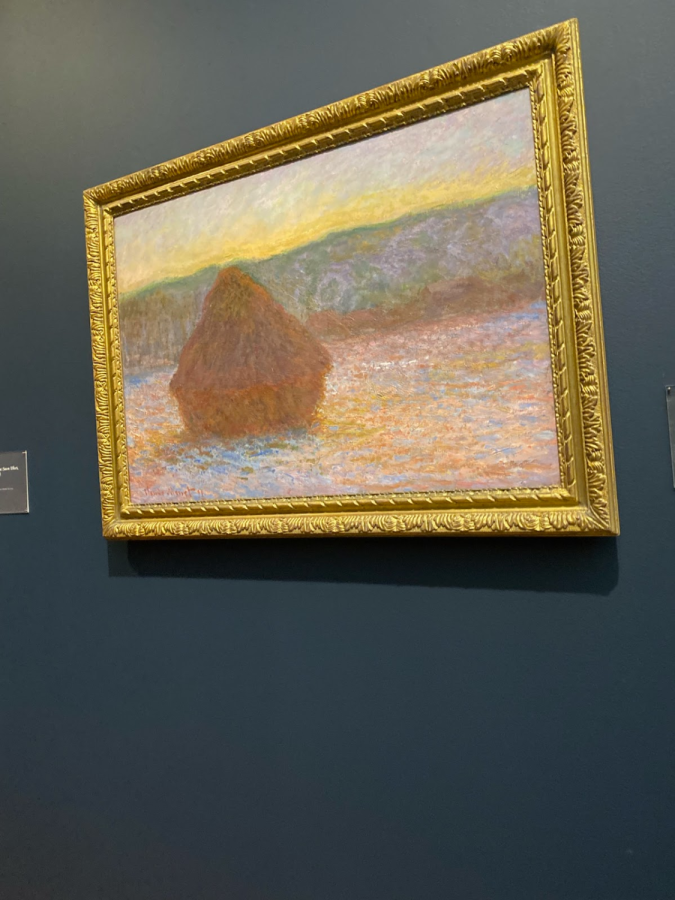Art vs. Climate Change Activists
In the Art Institute in Chicago, Haystacks by Claude Monet hangs in a room dedicated to the artist.
There is no denying that there has been a shift in temperature and weather conditions all around the world affecting the majority of the population. As the years pass, more hot days and heat waves occur; 2020 was one of the hottest years on record. When temperatures increase, wildfires start more easily and allow them to spread more rapidly.
This is a serious issue that many leaders have decided to push to the side. However, climate change activists are not going to stop protesting that easily and will do anything to get the attention of leaders all over the world.
Art is the expression or application of human creative skill and imagination, typically in a visual form such as in a painting or sculpture, producing works to be appreciated primarily for their beauty or emotional power. It has been a form of communication for centuries and now is something many want in their homes to bring character. There is no secret that paintings can go on to hold tremendous value in price and can be auctioned for an incredible amount of money. That’s why climate activists have taken advantage of that and decided to try and ruin these timeless paintings to make a “statement.”
On a peaceful Sunday in October 2022, two climate activists threw mashed potatoes on “Haystacks”, painted by the notorious Claude Monet. One of the thirty versions of the painting can be found inside the Museum Barberini in Potsdam, and was a target to draw attention to climate change. Through this, the activists were trying to grab the public’s attention and voice the importance of what is happening to the Earth through greenhouse gas emissions that blanket the Earth and trap the sun’s heat. However, by activists destroying well known paintings, it only causes aggravation by art lovers who hold these pieces dear to their hearts.
When wanting to destroy paintings like Monet’s Haystacks, luckily covered in protective glass serving no damage to the piece, it is trying to destroy modern history that is beloved and chairsted by many. To be able to spread a message about a cause, targeting art that is seen to be priceless by many only stirs an uproar in wanting to rebel against that said cause. It does not spread the message to be a positive one when people become angered by the protesting actions. There is no clear indication to why art is the reason for the target to get commotion for climate change besides the fact that it’s for people’s attention and to stir the media to get coverage on the cause.
Activists are claiming their efforts to be portrayed as non-violent with the intent to draw people’s attention to the climate crisis. While these efforts have sparked conversations, the desire to get recognition to this cause by destroying art is like destroying history that has been documented through different time periods these art pieces were created through. This only sparks debate and does not call for any action or compels leaders to want to change anything through the destruction of art.

Interests/Hobbies? I love to read, paint, and spending time with family.
Dream Destination? Europe
Something I'd tell my 10 year old self: Life is...











